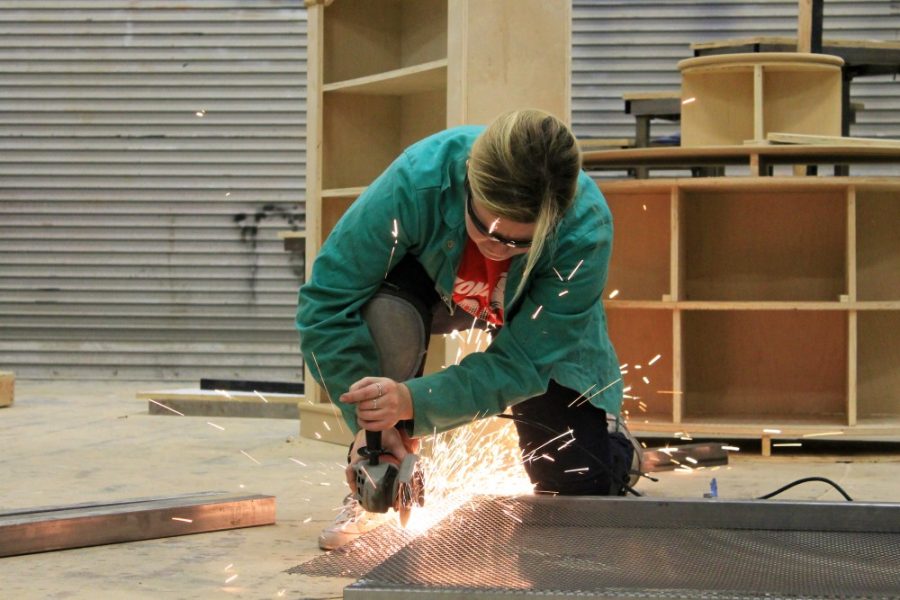Campus sustainability groups are coming together to hold a zero-waste game for this year’s Homecoming football game.
Zero-waste games are part of a Green Sports Alliance competition with the Pac-12 Conference, where schools enter one football game from their football season and are ranked based on different components, according to Julia Rudnick, coordinator of campus sustainability programs.
Rudnick said the components they judge are the games’ diversion rate — the amount of material saved through composting or recycling from going to a landfill — outreach to fans and collaboration with different organizations.
Last year was the UA’s first time in the competition, and with a diversion rate of 69 percent, the university came in third place in the Dec. 2015 competition, according to Rudnick. This year, she said they hope to improve their diversion rate.
Lily Engel, a junior studying biosystems engineering and math and the committee chair for the Greening the Game Committee, said they are hoping to use what they learned from their efforts last year to help this year.
“We’re going to have less stations in the stadium and focus more on the sorting of tailgating and stuff like that because there’s a lot of stuff we missed last year, so that should definitely help,” Engel said.
Zero-waste games differ from the usual Greening the Game efforts that are present at every game, Rudnick said.
Usually a group of around 10 students will collect recyclables during the game, but for zero-waste games, these efforts are ramped up to include collecting compostable materials as well.
Rudnick estimates that over 125 students will be involved in the collection of materials during pre-game tailgating, the game itself and after-game cleanup.
- These students will work different parts of the Homecoming game’s material collection.
- During the tailgate, there will be 50-75 students sorting materials for compost and recycling
- Inside the game, 25 more students will work at green stations throughout the stadium
After the game, another 50 students will pick up compostable and recyclable materials around the stadium
Rudnick said that this after-game collection is typical part of Greening the Game and that they usually work as long as they keep the lights on in the stadium.
Those who work the tailgate may receive credit from their professors for their work, while those working during and after the game will be paid through their positions with student sustainability groups or as a student club, Rudnick said.
Rudnick said they will be debuting new sorting tables built by theatre production and psychology senior Inga Kalvaitis specifically for sorting compost. These tables, funded through a mini-grant from the Green Fund, can be used to sort trash to find compostable materials.

“That way they actually touch every single piece of trash and make sure it goes in the right place,” Rudnick said.
Kalvaitis said she designed the table herself, with suggestions and criteria from Rudnick. Kalvaitis has made one table so far and plans to make another one before the Homecoming game.
“I was actually really surprised that no one had come up with this for any sort of composting,” Kalvaitis said. “I know that a lot of the schools, especially in the Pac 12, are trying to be more environmentally friendly, and that’s something I thought was really cool about this.”
The use of the tables is a “pilot,” Rudnick said, to see how it works to use it in other projects. Kalvaitis also hopes that, if it becomes a “more solidified project,” she could make a pamphlet on how to build the tables so other students could build them.
Besides just diverting material from the landfill, zero-waste games and Greening the Game efforts can impact event attendees, according to Engel.
“Because there’s so many people at these events and they see what we’re doing, they would learn the significance of what we’re doing as well as how to bring it to their own homes,” Engel said.
Rudnick said events like these are important and take collaboration from many different groups, such as Facilities Management and Arizona Athletics, as well as the students themselves.
“Anytime you can get this amount of students all together coming together for a cause, because it’s really something that they believe in,” she said. “Everyone pulls together and makes something like this happen because it’s a huge endeavor.”
Follow Ava Garica on Twitter.








